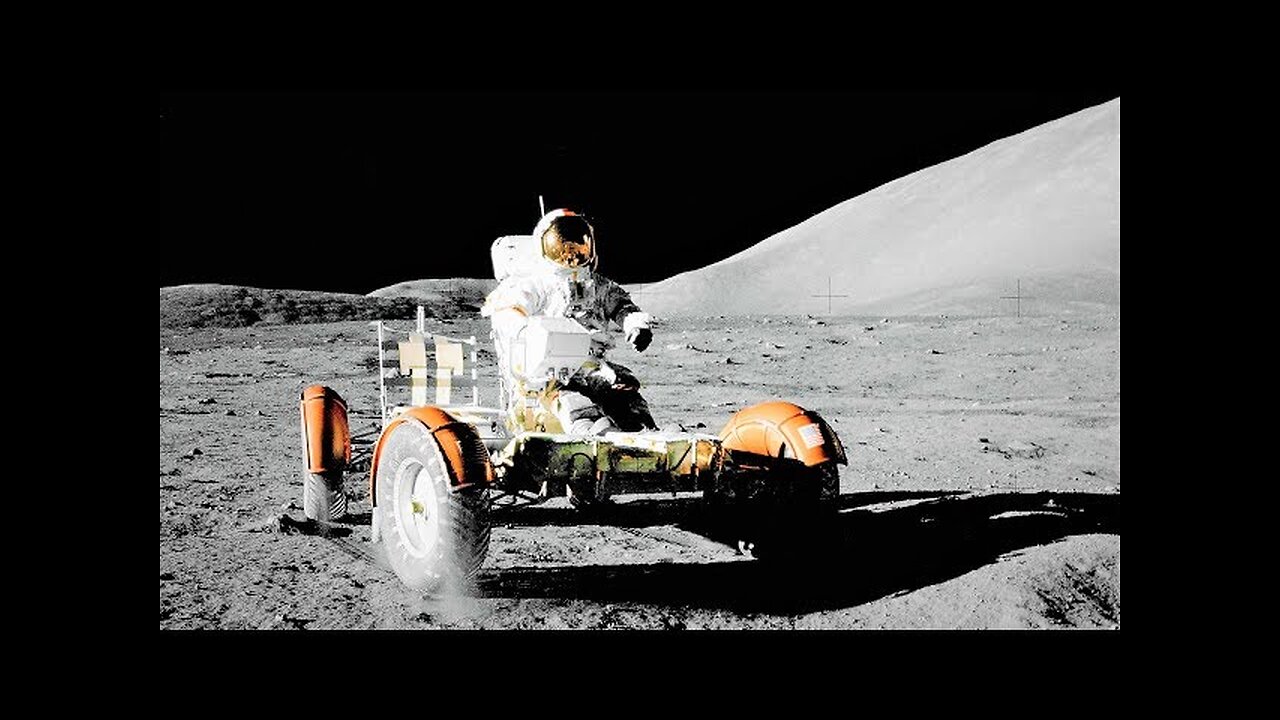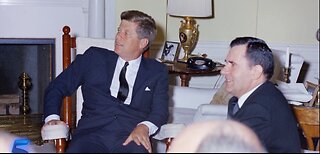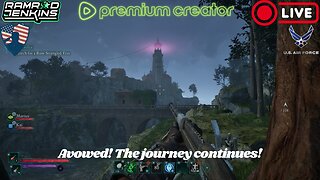Premium Only Content

FORGOTTEN HISTORY: The Last Man On The Moon
"If I asked you to name the last man to ever walk on the moon, would you be able to answer ? An estimated 600 million people tuned in to see Neil Armstrong become the first man to walk on the moon. Few remember the final speech given only 3 ½ years later.
HEY YOU ! There are more awesome videos being made every week, like and subscribe to World Unearthed so you don't miss a beat !
“That’s one small step for a man, one giant leap for mankind”.
As the Apollo 11 moon landing mission started on July 20th, 1969, an estimated 600 million people tuned in to see Neil Armstrong become the first man to walk on the moon.
Few remember the final speech given only 3.5 years later. If I asked you to name the last man to ever walk on the moon, would you be able to answer ?
Let's rewind a bit, the year is 1960 and NASA has just started their third human spaceflight program, called Project Apollo.
At first, their goal was to create a spacecraft that could fit three people, but later on President John F. Kennedy made it a national goal to take a man to the moon and return him safely.
Obviously, there were many more small intricacies, considering the 60s were the height of the Cold War and the space race.
While the 1962 Cuban Missile crisis was taking its toll on the world, scientists at NASA were hard at work working on the Apollo Command/Service module and the Saturn IB launch vehicle.
Part 1 : THE TECHNOLOGY
The Apollo mission was years in the making, even before it was official. The work of Wernher von Braun and his team made it possible to dream that we could travel to space. The saturn series of launch vehicles were originally meant to launch heavy payloads to earth orbit, like military satellites, later on they explored the possibility of using Saturn rockets for manned space flight launches.
Part 2 : FIRST TESTS AND FLIGHTS
Codenamed AS-201, the first test flight of the Apollo program took place on February 26th, 1966, some 6 years after the start of the program. After 37 minutes, the module had successfully reached and returned from sub orbiting the earth.
Another major milestone was the AS-204 test flight, also known as the Apollo 5 flight. It was the first unmanned flight of the Apollo Lunar Module which was manufactured by the Grumman Aerospace Corporation.
Part 3: FIRST/LAST
Apollo 11. July 16th, 1969. 1:32 pm. A Saturn V rocket launched an Apollo Command/Service Module and a Apollo Lunar Module from the Kennedy Space Center. On July 20th, the Lunar module landed on the moon’s surface.
Neil Armstrong, Buzz Aldrin and Michael Collins made history and forever changed our outlook on the final frontier.
Apollo 12 was the second successful moon landing. It was also the first mission to have “the remote possibility of interplanetary contamination”. Long story short, NASA sent over a Surveyor module to extract lunar soil and take pictures, 2 years before the Apollo 12 mission.
The crew was tasked with bringing back the soil samples and camera from the moon. It is widely claimed that Streptococcus mitis bacteria accidentally contaminated the camera equipment of the surveyor before launch. When the Apollo 12 crew brought the camera back, the bacteria was discovered, still alive. As unbelievable as it sounds, this tiny little organism managed to survive the extreme harsh lunar environment for 2 and a half years.
Oh, the crew also carried the first color tv camera to the moon, but accidentally destroyed it when it was pointed towards the sun.
Apart from being a dramatic story of extreme bravery, skill and fortune, the Apollo 13 crew is also credited as the farthest humans have ever traveled from earth, at an astounding 248,655 mi (400,171km).
Finally, we have arrived to a distinct moment in human history, the Apollo 17 mission.
The crew made up of Commander Eugene Cernan, Command Module Pilot Ronald Evans and Lunar Module Pilot Harrison Schmitt broke several records, including longest time in lunar orbit, longest moon landing, largest lunar sample, longest total moonwalks. Prepared with a Lunar Roving Vehicle, Cernan and Schmitt spent a little over 3 days on the moon's surface while Evans patiently awaited in the Command module orbiting the moon.
“Bob, this is Gene, and I'm on the surface; and, as I take man's last step from the surface, back home for some time to come – but we believe not too long into the future – I'd like to just (say) what I believe history will record: that America's challenge of today has forged man's destiny of tomorrow. And, as we leave the moon at Taurus–Littrow, we leave as we came and, God willing, as we shall return, with peace and hope for all mankind. Godspeed the crew of Apollo 17.”
Eugene Cernan was the last man on the moon."
-
 10:53
10:53
World Unearthed
1 month agoThe JFK Files (Declassified) | Part I
1101 -
 1:04:32
1:04:32
Man in America
16 hours agoHOLD ON!! Sunglasses Can Give You SKIN CANCER?! Why's No One Talking About This?
58.4K23 -
 15:42
15:42
DeVory Darkins
12 hours ago $37.09 earnedBernie SNAPS when asked about AOC replacing Schumer
95.9K255 -
 19:37
19:37
Stephen Gardner
12 hours ago🔥"VOTERS SHOULD BE PISSED" Trump's Agenda in Danger BECAUSE of lazy Republicans!
112K102 -
 7:59:56
7:59:56
SpartakusLIVE
12 hours agoGames w/ Fifakill & Lien || The Saturday SPARTOONS you've always desired
91.2K11 -
 5:40:08
5:40:08
RamrodJenkins
14 hours agoSunday Funday! Doing more quests on Avowed!
102K6 -
 5:27:02
5:27:02
Pepkilla
15 hours agoWe playing what we wanna play today :)
87.2K7 -
 3:08:22
3:08:22
GamerGril
13 hours ago🔥Hell Hath No Fury Like A Woman Scorned🔥
89.2K2 -
 7:58:43
7:58:43
Rotella Games
1 day agoMake the Manor Great Again
81.2K5 -
 3:11:56
3:11:56
The Quartering
12 hours agoEpstein Files Update, SodaGate, Snow White Box Office, Elon & Trump Strike Back BIGLY!
132K125